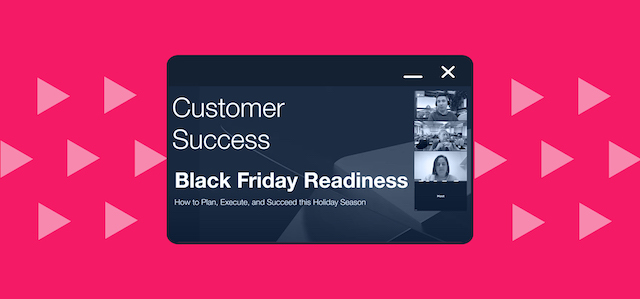
If 2020 was for many the year of digitization, 2021 certainly belongs to the ecommerce area. While the big players predictably continued their rise, the positive shock came from companies whose field of activity seemed far from the world of online transactions. While the roaring 1920s brought the era of artistic and creative consumerism, with the blooming of jazz music and art deco, exactly one century later we can see a similar consumerist scenario with a different coat. Centred on digital development, the future of ecommerce from 2021 on looks challenging, interesting and creative.
All in favour for ecommerce
The ecommerce industry is growing at a breakneck speed with customer demand for digital products and services on the rise. Gartner’s 2021 CIO survey shows that 76% of respondents saw customer demand for digital products and services increase as a result of the pandemic. This number is expected to grow phenomenally in the ’20s, especially with the Covid-19 pandemic shifting consumer behavior in favor of ecommerce.
Rapid expansion in the midst of unprecedented times means ecommerce merchants are finding themselves in a world where they need to adapt—swiftly and articulately. The changing consumer behavior, surging competition, increasing advertisement rates and proliferating digital content barely scrape the surface of the challenges e-store brands are facing today.
Based on previous trends identified by VTEX, we’ll look back at what we already know, give a few predictions for what’s about to come in the ecommerce sphere and discuss some factors that business leaders should consider as they prepare for the next future.
What to expect from the tech ‘20s
Going DTC
With an increase in revenue of almost 20% in 2021, the Direct-to-Consumer model goes hand in hand with the better known omnichannel. DTC approaches require focusing on a smaller category of products and creating a direct link with potential consumers across all possible channels. Thus, your product will exist in a complex ecosystem, online and offline, built around users.
With such a large segment of the retail customer experience moving online, consumers are drawn to DTC brands that offer a personalized experience. This means that even if they tend to buy from markets like Amazon or target.com, they are looking to buy products with a related brand story, affordable customer service and reliable delivery methods.
For example, they will be able to purchase it directly from Instagram, as soon as the seller has presented it at the offline stand, while a chat robot clarifies all warranty questions. No matter when the customer makes the decision, your brand will be there. But you can read expansively in this blogpost about customer retention strategies and ways to engage shoppers with the idea your brand represents.
Subscription retail
Subscription retail is not a new notion; it has always existed, even before the digital commerce boom. Subscription-based businesses are on the rise across the board, from groceries to cosmetic products, books to snacks and other replenishing items. COVID-19 boosted retail subscription services, as well as other online services, with a 41% increase in membership adherence during the health crisis.
According to Charged Retail, over 32% of British firms provide subscription services as of 2021, with 71% claiming that subscriptions helped them maintain cash flow during the first UK lockdown. Since 2014, the economy has grown at an annual pace of 890%, and forecasts are optimistic. Here is an example.
Chatbots and all that AI, but balanced
As artificial intelligence (AI) progresses, more and more websites are incorporating chatbots. This is an especially beneficial feature for ecommerce sites when clients are frequently looking for a certain item. While a decent search tool is crucial, some visitors find interacting with chatbots to be more entertaining and easy. While they cannot replace outstanding customer care, they can assist customers and reduce the workload of customer service employees.
Ecommerce’s drive for automation has helped businesses cut sales costs while also allowing customers to obtain things delivered to their homes at previously inconceivable rates. However, there are certain drawbacks to automation, the most significant of which is the arduous procedure clients experience when they wish to contact a real being to ask a question or file a complaint.
ChatCenter has managed to find the right balance between speed of response and a human element to overcome the challenge. According to ChatCenter, 60% of users prefer talking to a human being instead of a chatbot. What is even more telling is that most of the remaining 40% prefer chatbots because they have a frequently asked question, a scenario which is a perfect fit for this technology.
Make it as humane as possible
Among the many things that pandemic-imposed social distancing has shown, it is that humans need and value social interaction. This is why many online retailers are using artificial intelligence, social media tools and personalized customer service strategies to improve the online shopping experience through all channels and make them more human-like, but still accurate. And nothing says the future of ecommerce like AI tools do.
The real humane aspect of this bot-to-person interaction stays in the approach and the subjectivity of those tools, the way they replicate the in-store shopping experience: They come forward with advice and they cover most of your needs and questions. This shift to create technology as humanly as possible is a valuable trend for future reference.
Conversational commerce was born as a result of these shifts, in order to be helpful to online retailer’s customers while filling the gap left by customer support contact centers. Businesses may treat customers as individuals using it, treating them as if they had just entered a physical store.
It goes beyond just using messaging apps for selling products — it is a combined assortment of other services such as inquiries, order updates, payment information and more. In that way, it’s a quick method for customers to find exactly what they need without wasting time navigating through a website looking for specific information. All that while talking to a human being and having personalized customer service.
(A)live shopping
Live shopping, the online shopping experience that matches a video live stream with the capabilities of a traditional digital store, was pioneered just 5 years ago, but it’s already a force to be reckoned with in the Asian markets. It has reached more than 700 million buyers as of 2020 in China and the number is expected to keep growing.
Live Shopping offers a significant benefit over traditional ecommerce in that it takes place where potential customers are most likely to be found. Because most people utilized the internet to consume written material in the early 2000s, a mostly static website wasn’t an impediment to reaching potential customers. Familiarity, expandability, and personal attention are some of the reasons why this is one of the important terms that comes up when discussing the future of ecommerce. Read all about it here if you want more details.
Buy now, pay later
BNPL services are precisely what their name implies: they allow customers to buy something, usually online, and then pay for it later in whole or in installments, with no interest for short-term financing. When compared to standard layaway plans used in retail, the order is shipped in a business-as-usual manner, immediately after it is ordered, rather than after the complete price is paid.
However, the win-win feature is that shops are paid in full, upfront payments – minus a fee charged by the BNPL provider for authorizing the payment option. Depending on the BNPL solution and the merchant, as well as the item type and price, this cost might range from 2% to 8%. A flat rate is also charged by some services.
Overall, those fees appear to be a minor price to pay (pun intended) to capitalize on BNPL’s growing popularity. BNPL is currently the fastest-growing mode of payment in the developed world, far outpacing regular bank transfers and digital wallets such as Apple Pay, Google Pay, and Samsung Pay.
Look out for the future
All ecommerce trends for 2021 have one thing in common: the buyer is the center of attention. You can’t have a successful ecommerce business in 2021 without putting it first. When you pay attention to the needs of the consumer, you are rewarded with more frequent orders and loyalty. From payment and financing methods to an ultra-high-tech and personalized shopping experience, everything revolves around the needs and desires of those who can turn your small ecommerce business into a mega-success overnight.













